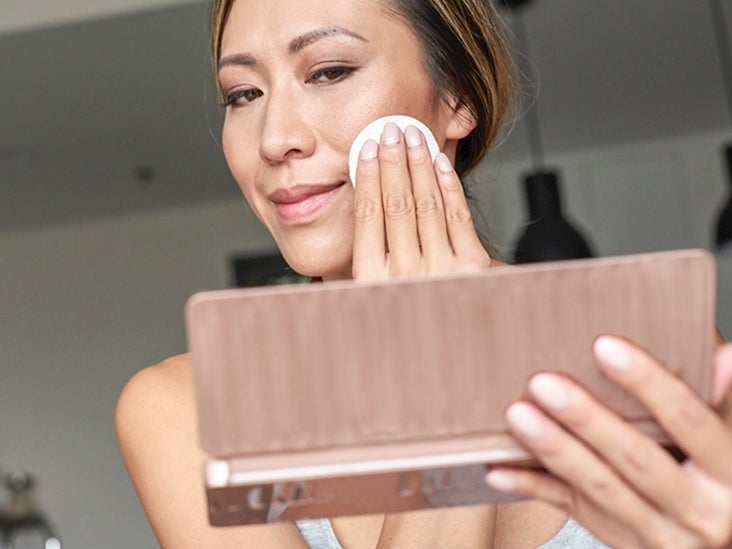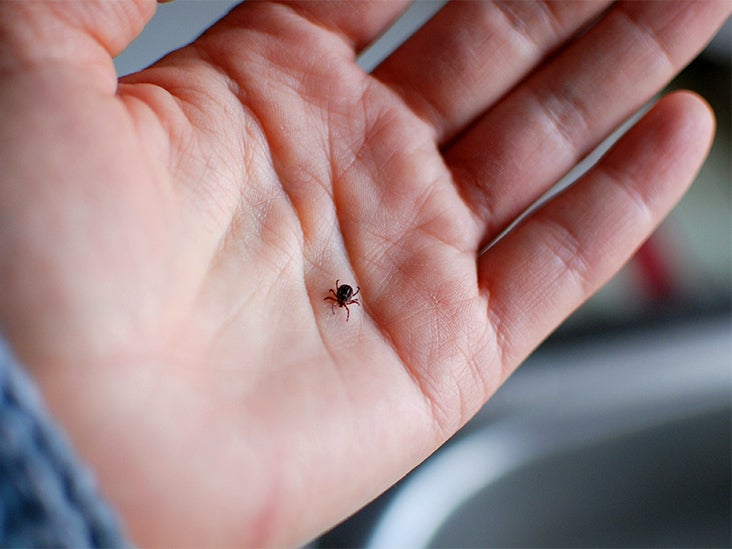Pressure in Ears Won't Go Away: How to Find Relief
Many of us have felt pressure in our ears at some point in time. It can be an uncomfortable sensation and feel like one or both ears are plugged up or clogged.
There are many possible causes of pressure in your ears, including changes in altitude, having a sinus infection, and even earwax buildup.
Keep reading to learn about what causes pressure in your ears, ways to relieve the pressure, and when to see a doctor.
You feel ear pressure when the pressure in your middle ear is different from the pressure in the outside environment. It can also be described as a feeling of discomfort, stuffiness, or fullness.
Small tubes called eustachian tubes regulate the pressure in your middle ear. You have one eustachian tube on each side of your head. They start in the middle ear and end in the area where your nasal cavity and upper throat meet.
Normally, the eustachian tubes open when you do things like swallow or yawn. This naturally equalizes the pressure in your middle ear.
If the eustachian tubes become narrowed or blocked due to a disease or condition, you may feel ear pressure that doesn't go away naturally.
Here are explanations for some of the more common causes of ear pressure:
Change in altitude
When altitude changes, your eustachian tubes may not have time to adapt to the change in pressure.
Examples of when this can happen is while flying in an airplane, driving in the mountains, or riding up an elevator in a tall building.
Divers can also experience ear pressure while descending. The pressure from the surrounding water pushes on the middle ear. Divers are taught to descend slowly and equalize middle ear pressure by ventilating through their eustachian tubes.
Sinusitis
Sinusitis is when your sinuses, which are the hollow spaces in your face, become inflamed.
This is often due to a viral infection, although in some cases bacteria may cause it as well. When the sinuses swell, you may also feel pressure or fullness in your ears.
Ear infections
An ear infection may also cause ear pressure.
Otitis media is a middle ear infection that occurs when the eustachian tube isn't draining properly. Fluid buildup can promote the growth of infection-causing viruses or bacteria.
Swimmer's ear is an infection of the outer portion of the ear that's typically caused by bacteria found in water. Although it affects the outer ear, people with swimmer's ear may also feel ear pressure due to swelling and fluid buildup.
Colds
The nasal inflammation and congestion that comes with a cold can also affect the eustachian tubes, preventing them from properly equalizing pressure within your middle ear.
Allergies
A condition called allergic rhinitis can occur in people with allergies to pollen, molds, or pet dander.
This can cause inflammation of the nasal passages and mucus buildup. Like with colds, this can also affect the eustachian tubes as well, causing ear pressure.
Earwax buildup
Earwax is naturally made by the body and protects the inner parts of your ear. Normally, earwax moves down the ear canal to the outer ear where it eventually flakes off.
Buildup of too much earwax can block the ear canal, causing ear pressure.
Foreign object
Having a foreign object stuck in your ear can also cause ear pressure and pain to occur. This may be more common in small children, who can sometimes place foreign objects in their ears, nose, or mouth.
Here are explanations for some uncommon causes of ear pressure:
Meniere's disease
Meniere's disease is a condition that affects the inner ear.
It's caused by the buildup of fluid within the inner ear. This can affect things like balance and how the things you hear signal to your brain. It typically only affects one ear.
Symptoms can include ear pressure, severe dizziness, and hearing loss.
Cholesteatoma
Cholesteatoma happens when skin grows abnormally in your middle ear. It can be present from birth or occur due to frequent ear infections.
In addition to ear pressure, other symptoms can include:
- foul-smelling drainage
- pain
- hearing loss
Acoustic neuroma
An acoustic neuroma is a benign tumor on the eighth cranial nerve, which is responsible for transmitting signals involving balance and hearing to the brain. It's a rare condition.
One of the main symptoms is hearing loss in the affected ear, however ear pressure and ringing in the ears may also occur.
Fungal ear infection
Fungal infections of the ear are referred to as otomycosis.
Otomycosis can occur in healthy individuals, however having a weakened immune system or an underlying condition such as diabetes can put you at a higher risk.
Feeling like your ear is blocked is one of the symptoms, along with itching, pain, and discharge.
Chronic otitis media
Chronic otitis media is when a middle ear infection doesn't resolve or keeps returning. It can be accompanied by things like persistence of fluid in the middle ear, a ruptured eardrum, or the presence of cholesteatomas.
Complications from chronic otitis media can include things like:
- hearing loss
- damage to facial nerves
- a bone infection called mastoiditis
Temporomandibular joint (TMJ) disorders
Your TMJ connects your jaw to your skull. TMJ disorders affect this joint.
The cause of many of these disorders is unclear, however some may be caused by damage to the joint or surrounding cartilage.
The main symptom of TMJ disorders is pain or discomfort, either in your jaw, face, or around your ears. Pain can also occur inside your ear.
The treatment for your ear pressure will depend on what's causing it. Below, we'll examine some of the ways to treat common causes of ear pressure.
Altitude changes
Yawning or swallowing can help to open your eustachian tubes and equalize pressure.
You may also consider using an over-the-counter (OTC) decongestant nasal spray. However, you should avoid using decongestants in young children.
Wax buildup
Earwax can be removed by using solutions such as mineral oil or hydrogen peroxide to dissolve earwax that's accumulated in the ear canal.
There are also special tools you can use to remove the wax manually, however this should only be performed under the supervision of a doctor.
Sinus congestion
To relieve sinus congestion, you can use OTC decongestants that can be taken either orally or sprayed into the nose.
OTC pain relievers like ibuprofen (Advil, Motrin) or acetaminophen (Tylenol) can help to relieve pain or swelling. Additionally, nasal irrigation with a neti pot may also help.
Ear infections
Some ear infections may resolve without antibiotic treatment. OTC pain medication or eardrops may be recommended to help ease pain.
If a bacterial infection is suspected, antibiotics that can be taken orally or given as ear drops may be prescribed.
Allergies
OTC antihistamines (such as Claritin or Zyrtec) or corticosteroid nasal sprays (Flonase, Nasonex) can help to relieve allergy symptoms.
You may also consider nasal irrigation with a neti pot.
Blockage due to foreign object
You can do the following things at home as first aid for a foreign object in the ear:
- if the object is visible, carefully use tweezers to gently remove it
- tilt your head to the side to use gravity to remove the object
- try to wash the object out using a small syringe with warm water to gently irrigate the ear canal
Fluid buildup
Conditions like allergies or colds can affect the eustachian tubes, causing fluid to build up in the middle ear. This fluid can also become infected, leading to otitis media.
Treatment of the condition that's causing fluid buildup should help it drain. However, in cases where there's prolonged fluid buildup in the ears, a surgical procedure may be needed to help reduce pressure and drain fluid.
If you frequently have problems with ear pressure, your doctor may suggest a surgical treatment. We'll explore the possible options below.
Myringotomy
During this procedure, the doctor makes a small incision in the eardrum. Any fluid that's accumulated in the middle ear is then carefully removed.
The incision is usually left open until swelling or blockage of the eustachian tube goes away. You can have a myringotomy with or without ear tubes.
Ear tubes
The placing of tubes is similar to a myringotomy except that after making the incision and draining fluid, a small metal or plastic tube is inserted into the eardrum.
This tube can be kept in place to help relieve pressure and prevent fluid buildup.
While these procedures help to relieve ear pressure, there are some downsides to them as well.
In some cases, the incision in the eardrum may not heal, requiring surgical repair. Additionally, people with tubes in their ears must keep water out of their ears using earplugs or cotton balls while swimming or bathing.
A ruptured eardrum is when there's a tear in your eardrum, which is the thin piece of tissue that separates your ear canal from your middle ear.
A variety of things can cause your eardrum to rupture, including ear infections, foreign objects, and stress from pressure differences between the middle ear and the outside environment.
You should always be sure to contact your doctor if you're experiencing any of the symptoms of a ruptured eardrum. Some symptoms to look out for include:
- ear pain that comes on and then quickly goes away
- hearing loss
- drainage from the ear, which can be bloody, clear, or contain pus
- feeling a spinning sensation or dizziness (vertigo)
- having ringing in your ears (tinnitus)
You should make an appointment with your doctor if you experience ear pressure that:
- is prolonged or gets worse despite at-home treatment
- comes with symptoms like severe pain, fever, dizziness, or bleeding from your ear
- is due to a foreign object that cannot be removed using at-home first aid techniques
Feeling ear pressure is a common occurrence. It can occur due to things like altitude changes, colds, or allergies.
You can typically treat the causes of ear pressure at home through swallowing or yawning to 'pop' your ears or by taking OTC medications.
However, if you find your symptoms persist or get worse with at-home treatment, you should see your doctor to discuss your condition.
-
 6 interesting genetic traits that children will inherit from their parents
6 interesting genetic traits that children will inherit from their parents
-
 7 effects of asparagus on child development
7 effects of asparagus on child development
-
 Does cutting blood hair for babies bring good luck?
Does cutting blood hair for babies bring good luck?
-
 The more babies eat, the higher the height they develop, especially the second kind
The more babies eat, the higher the height they develop, especially the second kind
-
 Children with chicken pox should eat to quickly recover from the disease, without leaving a deep scar?
Children with chicken pox should eat to quickly recover from the disease, without leaving a deep scar?
-
 The more food is cooked, the better it can be for health, especially the second type
The more food is cooked, the better it can be for health, especially the second type
-
 How Many Calories Does Planking Burn? Calories and Instructions
How Many Calories Does Planking Burn? Calories and Instructions
-
 Rebirthing Therapy: Safety, Technique, Bans, and More
Rebirthing Therapy: Safety, Technique, Bans, and More
-
 TCA Peel: Usage, Cost, and Results
TCA Peel: Usage, Cost, and Results
-
 Can You Die from Laughing? How and When It's Possible
Can You Die from Laughing? How and When It's Possible
-
 Is Lyme Disease Contagious? How It Spreads (and How It Doesn't)
Is Lyme Disease Contagious? How It Spreads (and How It Doesn't)
-
 Treatment for Obesity: Diet, Medications, and More
Treatment for Obesity: Diet, Medications, and More































